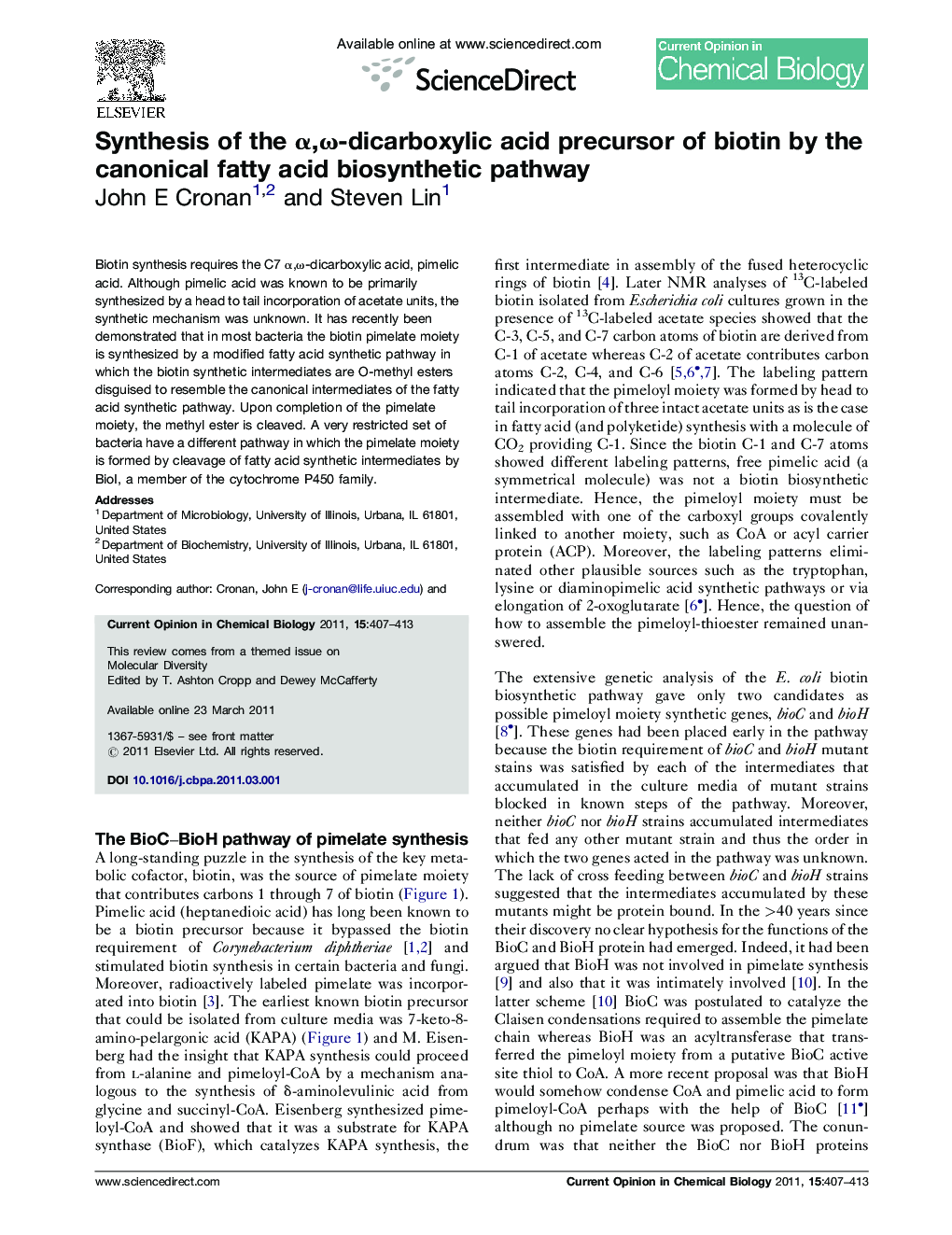| Article ID | Journal | Published Year | Pages | File Type |
|---|---|---|---|---|
| 1256688 | Current Opinion in Chemical Biology | 2011 | 7 Pages |
Biotin synthesis requires the C7 α,ω-dicarboxylic acid, pimelic acid. Although pimelic acid was known to be primarily synthesized by a head to tail incorporation of acetate units, the synthetic mechanism was unknown. It has recently been demonstrated that in most bacteria the biotin pimelate moiety is synthesized by a modified fatty acid synthetic pathway in which the biotin synthetic intermediates are O-methyl esters disguised to resemble the canonical intermediates of the fatty acid synthetic pathway. Upon completion of the pimelate moiety, the methyl ester is cleaved. A very restricted set of bacteria have a different pathway in which the pimelate moiety is formed by cleavage of fatty acid synthetic intermediates by BioI, a member of the cytochrome P450 family.
